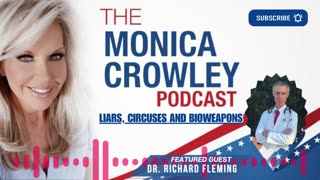Do They Add Up? Using Macro Counterfactuals to Assess Micro Estimates and Macro Models
September 27, 2023
Hoover Institution | Stanford University
Valérie Ramey, senior fellow at the Hoover Institution, discussed “Do They Add Up? Using Macro Counterfactuals to Assess Micro Estimates and Macro Models,” a paper with Jacob Orchard (Federal Reserve Board) and Johannes F. Wieland (University of California, San Diego).
PARTICIPANTS
Valérie Ramey, John Taylor, Joshua Aizenman, Christopher Ball, Michael Bauer, Eric Bettinger, Michael Boskin, Ruxandra Boul, Luca Branco, Pedro Carvalho, Sami Diaf, Christopher Ford, Bob Hall, Robert Hodrick, Nicholas Hope, Ken Judd, Greg Kaldor, Tim Kane, Dan Kessler, Peter Klenow, Donald Koch, Anjini Kochar, Evan Koenig, David Laidler, Mickey Levy, John Lipsky, Alexander Mihailov, Radek Paluszynski, Elena Pastorino, Charles Plosser, Ned Prescott, Flavio Rovida, Paola Sapienza, Jialu Streeter, Jack Tatom, Yevgeniy Teryoshin, Eric Wakin, Mark Wynne
ISSUES DISCUSSED
Valérie Ramey, senior fellow at the Hoover Institution, discussed “Do They Add Up? Using Macro Counterfactuals to Assess Micro Estimates and Macro Models,” a paper with Jacob Orchard (Federal Reserve Board) and Johannes F. Wieland (University of California, San Diego).
John Taylor, the Mary and Robert Raymond Professor of Economics at Stanford University and the George P. Shultz Senior Fellow in Economics at the Hoover Institution, was the moderator.
PAPER SUMMARY
Macroeconomics has increasingly adopted tools from the applied micro "credibility revolution" to estimate micro parameters that can inform macro questions. In this paper, we argue that researchers should take advantage of this confluence of micro and macro to take the credibility revolution one step further. We argue that researchers should assess the plausibility of the micro estimates and macro models by constructing macro counterfactuals for historical periods and comparing these counterfactuals to reasonable benchmarks. We illustrate this approach by conducting a case study of the 2001 U.S. tax rebates, as well as brief analyses of the 2008 rebate and the ARRA. In the 2001 rebate case, we calibrate a standard two agent New Keynesian model with the leading estimates of the household marginal propensity to spend out of the rebates to construct a counterfactual path for nondurable consumption.
According to the model, without the tax rebate, nondurable spending would have fallen in the fall of 2001 by more than any other post-war period except COVID-19 and the fall of Lehman Brothers. Using forecasting regressions and other evidence, we argue that this counterfactual is highly implausible. When we investigate the source of the discrepancy, we find that the leading MPC estimates are not representative of the total response of consumption. We also find that counterfactuals for the 2008 rebate and the ARRA are similarly implausible.
To read the slides, click the following link
https://www.hoover.org/sites/default/...
-
 3:23:38
3:23:38
Jerry After Dark
16 hours agoJerry After Dark: Warzone ft. Nickmercs
55.6K2 -
 4:12:32
4:12:32
Geeks + Gamers
8 hours agoTuesday Night's Main Event
33.9K4 -
 1:57:04
1:57:04
Kim Iversen
8 hours agoWEF’s Klaus Schwab Is Retiring. Who's Next? GOP Bill Gives VA Benefits To IDF Soldiers | Anti-Genocide 2024 Candidate Jill Stein
49.6K145 -
 2:21:54
2:21:54
Laura Loomer
8 hours agoEP48: Biden DOJ Authorized FBI Assassination of President Trump as Sham NYC Trial Insanity Continues
58.8K152 -
 15:57
15:57
Breaking Points
16 hours agoBlinken THREATENS GLOBAL STARVATION In Secret Arab Meeting
42.8K55 -
 1:24:20
1:24:20
TheMonicaCrowleyPodcast
14 hours agoThe Monica Crowley Podcast: Liars, Circuses and Bioweapons
39.3K16 -
 54:33
54:33
LFA TV
22 hours agoPoetic Justice as CNN Forced to Defend Donald Trump | Trumpet Daily 5.21.24 9pm EST
40.3K13 -
 53:50
53:50
The Late Kick with Josh Pate
11 hours agoLate Kick Live Ep 515: Rashada Sues Napier | Conference Sleepers | Bold Predictions | Nebraska Mood
41.9K3 -
 1:02:46
1:02:46
The StoneZONE with Roger Stone
9 hours agoWho Shot Down The President Of Iran? + Zelensky Cancels Elections…AGAIN | The StoneZONE
48.5K50 -
 1:52:59
1:52:59
The Quartering
12 hours agoWoke Disney/Pixar Collapses, Game Journalism SHUT DOWN, Windows Spying On You & More
68.6K28